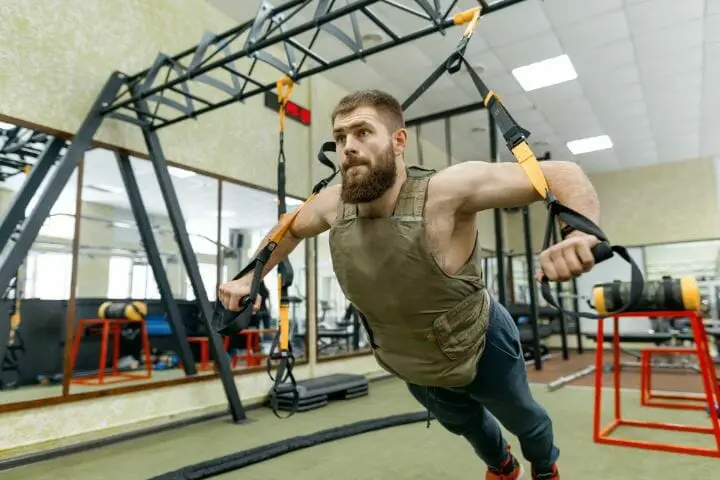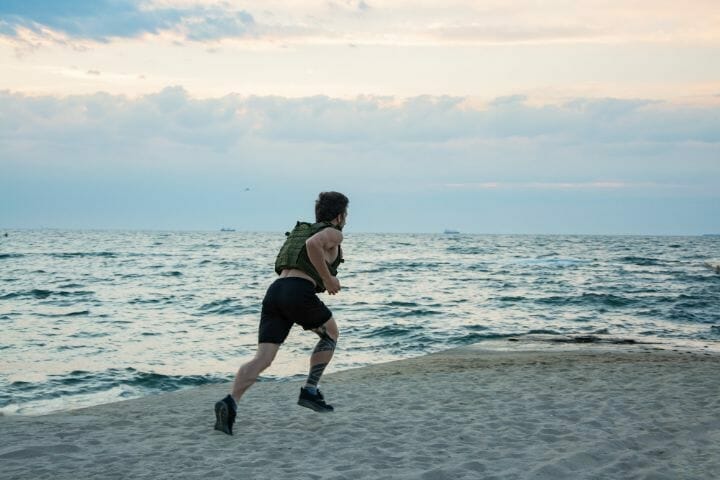Weighed vests are the newest workout accessories in the market. They are used by a lot of fitness freaks and people with specific health conditions.
Weighted vests come with a lot of benefits. Runners use them to improve their running times and build endurance, CrossFit athletes use them to strengthen muscles, osteoporosis patients use them to improve bone density.
Contents
Weighted vests are even used by kids to help improve symptoms of neurodevelopmental disorders like autism and ADHD. Obese people use them to reduce weight.
Though there is information on the internet on how long a weighted vest can be worn, and if it can be worn through the day, or while asleep, there is one question that does not have concrete answers. It is about how much a weighted vest must weigh!
Weighted vests in the market come in a wide range of weight limits. Starting from 4lbs, and going as far as 120lbs, there are vests for everyone to try out, be it petite women or large oversized bodybuilding men.
Most of the vests available today are adjustable. They come with multiple small weights of 3-5 lbs, which can be added to or removed from the vests to make them heavier or lighter. However, care must be taken by wearers about the loading of weights, for excessive loads can cause permanent damage.
Before we get into further detail, one must always remember to always start off by loading a vest with small weights and must progress to larger weights only after the body adjusts to the additional load.
Attention should be paid to the body and any sign of pain or discomfort should be heeded immediately. Please note that it is advisable to use weighted vests only under the direction of a physical trainer or a medical practitioner.
Factors Determining The Weight Of A Vest
#1 The Type Of Activity
Though weighted vests can be used for various kinds of activities, these can be broadly classified into three buckets – cardio, strength training, and all-day wear.
If you are going to use a weighted vest for cardio workouts, it needn’t weigh too much. Even a lightweight vest can help stimulate your cardiovascular system into performing better.
However, if you plan to use a vest for strength training, then you may go in for a heavyweight vest. This is because your muscles become stronger and more capable as you work out and may be able to bear more load with time.
If you are planning to wear a vest all day, with the intent of strengthening bones or losing weight, then you must be careful not to overload the vest. With prolonged usage, even small weights may have a lasting impact. As a thumb rule, you may wear a vest that weighs 10-15% of your body weight.
You might like to read Can You Run After Knee Replacement
#2 Fitness Levels Of A Person
People vary in their age and fitness levels. Extreme care should be taken to decide the weight of the vest based on these factors. If people with a weak spine or those with osteoporosis employ vests weighing, say like 50 lbs, they may end up doing more harm than good to their bodies.
On the contrary, weightlifters and bodybuilders, who may have extremely strong muscles may easily work with vests weights 70-80 lbs. This is because their bodies are already conditioned to bearing heavy loads, and lighter loads may not have the necessary impact on their muscle groups.
#3 Duration Of Wear
Thirdly, it is very important to consider the length of time you will wear a weighted vest. You may experiment with heavy vests if you plan to use them only for a very short while.
However, if you plan to wear vests for hours on end, then you must opt for a light vest. Wearing the wrong type of vest or loading it excessively may cause injury to your shoulders, spine, and other joints.
Weight Classification Of Vests
Based on the purpose of wearing weighted vests, they may be broadly classified into three weight groups-
You might like to read Management Of Osteoporosis in the Elderly
#1 Lightweight Vests, Weighing Less Than 20 Lbs
These vests are the lightest category and can be used by a broad spectrum of users, from kids to old people. More importantly, they can be used for cardiovascular workouts like running and cycling.
From running to hiking, using such weights are relatively safe, even with extended wear. Such vests are wearable all day or when you lie down. Such vests find maximum utility when the objective is weight loss or increased endurance.
#2 Moderately Weighing Vests, Weighing Between 20 Lbs And 50 Lbs
Vests weighing between 20 and 50 lbs are designed for experienced wearers who have a specific target muscle group, or objective in mind.
For example, experienced CrossFit trainers may employ such vests to build muscle while trying to simultaneously improve performance.
#3 Heavyweight Vests, Weighing More Than 50 Lbs
These vests are only used by people performing highly targeted workouts. Weight or strength training usually involves lifting weights in the range of 300 to 400 pounds. In such scenarios, an additional 60 to 70 pounds worn during training can have a remarkable effect on the capacity of the person lifting weights.
For example, if a person regularly lifting 350 lbs starts training with a weighted vest, he may soon be able to lift 370 lbs or be able to perform more repetitions with the same 350 pounds in due course.
However, extreme caution is to be exercised while using weighted vests of this magnitude, for the slightest error could cause devastating injuries. Also, such vests must be taken off after workouts, and must never be worn for extended periods of time.
While we make every effort to provide updated and correct information, the advice given in this article and website should not be construed as “medical advice.” Please consult with your medical practitioner or fitness trainer before using any weighted vest.
Everyone may have his or her unique issues, and your medical practitioner is the best person to decide if you can wear a weighted vest, or how much your weighted vest should weigh.



